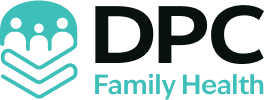TL;DR:
- Cancer could be the leading cause of death this century, with 1.76 million diagnoses and 607,000 U.S. deaths in 2019.
- Curing cancer offers extended healthy lives, improved survival rates, and lower mortality.
- Current cancer treatment costs $150 billion annually, with potential savings of $50 billion.
- Breakthroughs include immunotherapy, precision oncology, and new diagnostic tools.
- Quality of life improvements entail reduced suffering, better mental health, and healthier family dynamics.
- Direct primary care enhances cancer management by offering affordability, accessibility, and comprehensive care.
Imagine facing a diagnosis that tops global mortality charts—cancer. Every year, millions are touched by its devastating reach, with cancer causing 9.6 million deaths worldwide in 2018 alone. And in the U.S., the numbers are equally chilling, with nearly 606,880 lives lost in 2019. So why is curing cancer important for global health? Well, the answer affects us all. Lowering these staggering mortality rates could revolutionize public health and save countless lives. Let’s dive in and explore the profound importance of tackling this formidable disease head-on. Ready? Let’s get started!
The Critical Importance of Curing Cancer
Cancer is likely to become the leading cause of death worldwide this century. In 2019, about 1,762,450 people in the U.S. were diagnosed with cancer, and around 606,880 were expected to die from it. In 2018, cancer claimed 9.6 million lives globally.
Why should these numbers matter to us? They reveal a significant burden on public health systems everywhere. Hospitals and clinics are overwhelmed, and resources are stretched thin—imagine trying to fit a basketball team into a tiny car.
When we eventually cure cancer, here’s what could change:
- Health Benefits: People could enjoy longer healthier lives without harsh treatments.
- Reduced Mortality: More survivors mean more families remain intact, keeping loved ones around longer.
- Improved Survival Rates: Finding a cure tips the odds in our favor, like finally having a cheat code for life.
Lower cancer mortality rates would free up resources to tackle other health issues, leading to widespread benefits for society. Public health systems could operate more efficiently, and the positive impact would ripple through communities.
Economic Implications of Cancer Eradication

Why is cancer so costly? The current cancer treatment expenses are a financial drain, consuming billions annually. It’s a massive burden on healthcare systems. For you and me, it’s like a vacuum sucking up resources that could be used elsewhere. Hospitals scramble for funds, and patients face high bills. It’s a tough situation.
Here’s a look at the numbers:
| Cost Category | Annual Cost (in billions) | Potential Savings |
|———————–|—————————|——————-|
| Direct Treatment Costs| $150 | $50 |
| Indirect Costs | $100 | $40 |
| Research Funding Needs| $10 | $5 |
Pretty striking, right? Eliminating cancer could lead to huge savings. We could redirect that money toward other health issues, like diabetes, heart disease, or mental health services. The possibilities are endless.
Reducing cancer rates would free resources to address other urgent health needs, like lifting a financial burden off our shoulders. With fewer people needing costly treatments, healthcare systems can operate more smoothly. That’s a win for everyone!
Advancements in Medical Research and Cancer Treatment
Do you wonder how far we’ve come in the fight against cancer? Researchers are making remarkable progress in prevention, detection, treatment, and survivorship. Institutions like the Fox Chase Cancer Center play a leading role, focusing on every detail of this complex disease.
The real breakthroughs lie in innovative therapies. These treatments are not only effective but also gentler on the body. It’s a dream slowly becoming reality.
Breakthroughs in Immunotherapy and Precision Oncology
This is where it gets exciting. Immunotherapy and precision oncology are like the Batman and Robin of cancer treatment—powerful, precise, and tailored to individual needs.
- Immunotherapy: This method empowers your immune system to target cancer cells. Recent advancements have significantly boosted survival rates.
- Precision Oncology: This is like a GPS for cancer treatment. By analyzing a patient’s genetics, doctors craft a personalized treatment plan. It’s like having a VIP pass to top-quality care.
Recent breakthroughs include:
- New diagnostic tools that detect cancer early when it’s most treatable.
- Targeted therapies that focus on cancer cells with minimal side effects.
- Improved survival rates, providing hope to millions globally.
The future of these innovations is bright. With continued scientific progress, the dream of curing cancer seems within reach. Imagine a world where cancer is just a small health issue. That’s our goal, and with these advancements, we’re on our way to achieving it.
Improving Quality of Life Through Cancer Eradication

What does “quality of life” mean in cancer care? It’s about how well people live while managing the disease, including physical, mental, and social aspects. Many patients choose palliative care for comfort when a cure seems unlikely. Still, imagine a world where cancer isn’t a constant threat. How would life change?
Here’s what we could see:
- Reduced Suffering: Without cancer, patients avoid harsh treatments like chemotherapy, with no more nasty side effects.
- Improved Mental Health: A cancer diagnosis stresses mental health. A cure could remove that burden, offering more peace of mind.
- Better Family Dynamics: Cancer affects families, too. With a cure, families can live life without the shadow of illness.
To achieve these changes, personalized patient care is essential. Every patient is unique, and their care should be too. By tailoring treatment plans, we ensure the best possible care, not just curing cancer but enhancing life overall.
The Role of Direct Primary Care in Cancer Management
Why is direct primary care pivotal in cancer management? It’s patient-focused care that prioritizes your needs. By eliminating insurance hassles, it makes healthcare more accessible, focusing on what truly matters—your health.
How does this aid in cancer care? Direct primary care offers continuous support and personalized treatment plans. It’s like having a healthcare buddy who knows your history and needs. This attention is vital for managing chronic diseases like cancer.
Consider these benefits:
- Affordability: No insurance hassles mean predictable costs with a flat fee.
- Accessibility: Contact your doctor via phone, email, or text without long waits.
- Comprehensive Care: Spend more time with your doctor to focus on overall health, not just cancer.
Advocating for direct primary care in cancer management makes sense. It can enhance patient outcomes and reduce health disparities. Imagine a world where everyone receives top-notch care, regardless of background. That’s the dream, and direct primary care brings us closer to realizing it.
Final Words
Curing cancer isn’t just about saving lives; it’s about transforming the world. Slashing mortality rates not only lifts a gnawing burden off public health but also unlocks vast economic potentials.
Imagine the ripple effects of redirecting hefty cancer care costs to other vital health areas.
With breakthroughs in treatment and a focus on quality of life, we’re leaping toward brighter futures. Direct Primary Care can revolutionize cancer management, enhancing access and care. So, why is curing cancer important? It’s about healthier, happier lives for all.
FAQ
What is the latest on cancer cures?
The latest on cancer cures involves advancements in immunotherapy and precision oncology. These innovative treatments are showing promise in improving survival rates and personalizing care for different cancer types.
Why is there no cure for cancer yet?
There is no cure for cancer yet due to its complex nature. Each cancer type behaves differently, requiring ongoing research and diverse treatment approaches to target specific mechanisms effectively.
Are there cures for cancer in other countries?
While no country has a definitive cure for all cancers, global research efforts are underway. Some countries have developed advanced treatments and therapies that contribute to improving outcomes and survival rates.
How close are we to finding a cure for cancer by 2024?
Efforts to find a cancer cure by 2024 are ongoing, with significant progress in treatments like immunotherapy. While a complete cure remains elusive, advancements are improving quality of life and survival rates.
What is immunotherapy in cancer treatment?
Immunotherapy is a cancer treatment that enhances the immune system’s ability to fight cancer. It uses substances to stimulate or restore the immune response, offering personalized and targeted treatment options.
Why is it crucial to treat cancer?
Treating cancer is crucial because it improves survival rates and quality of life. Early and effective treatment can lead to better recovery outcomes, lower mortality rates, and reduced strain on healthcare systems.
What happens if you don’t treat cancer?
Without treatment, cancer can progress, leading to serious complications or death. Untreated cancer may spread to other parts of the body, making it more challenging to manage over time.
Can you live with cancer without treatment?
Living with cancer without treatment may be possible for some, depending on the cancer type. However, untreated cancer typically worsens, and patients may opt for palliative care to maintain quality of life.

